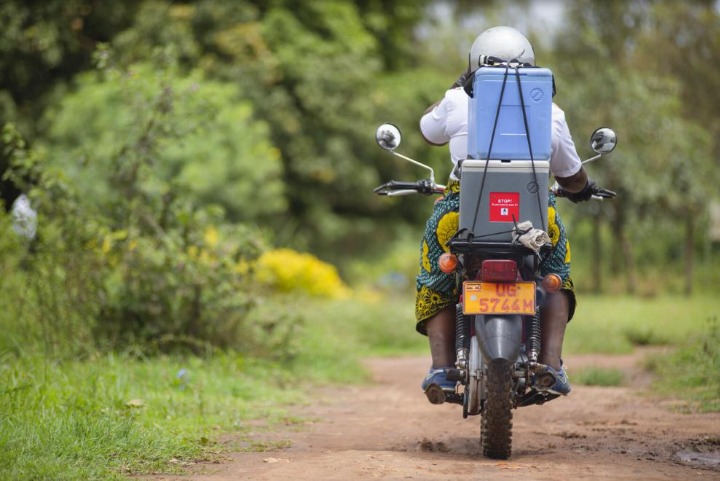By Namuli Hasifah (Lead Writer)
Every day is immunisation day at the Bujubuli Health Centre III in Uganda’s Kyegegwa district’s Bujubuli sub-county. Kyegegwa is a refugee host area situated within the Kyaka II refugee settlement camp.
Established in 2005, the Kyaka II refugee settlement is one of the many settlements managed by the United Nations High Commissioner for Refugees (UNHCR) and the Office of the Prime Minister of the Republic of Uganda. The district, which is home to refugees from the Democratic Republic of Congo (DRC), Burundi, Ethiopia and Kenya was created to offer free quality health services to the over 28,000 adult and 25000 child refugees resident in the camp.
The district is difficult to access due to its hilly terrain. Mothers frequently travel over 20 kilometres on bicycles or on foot to access the closest health centre, which used to provide immunisation services twice a week. This was mainly because the centre could not store vaccines as it did not have a stable source of power supply, refrigerators and cold chain boxes.
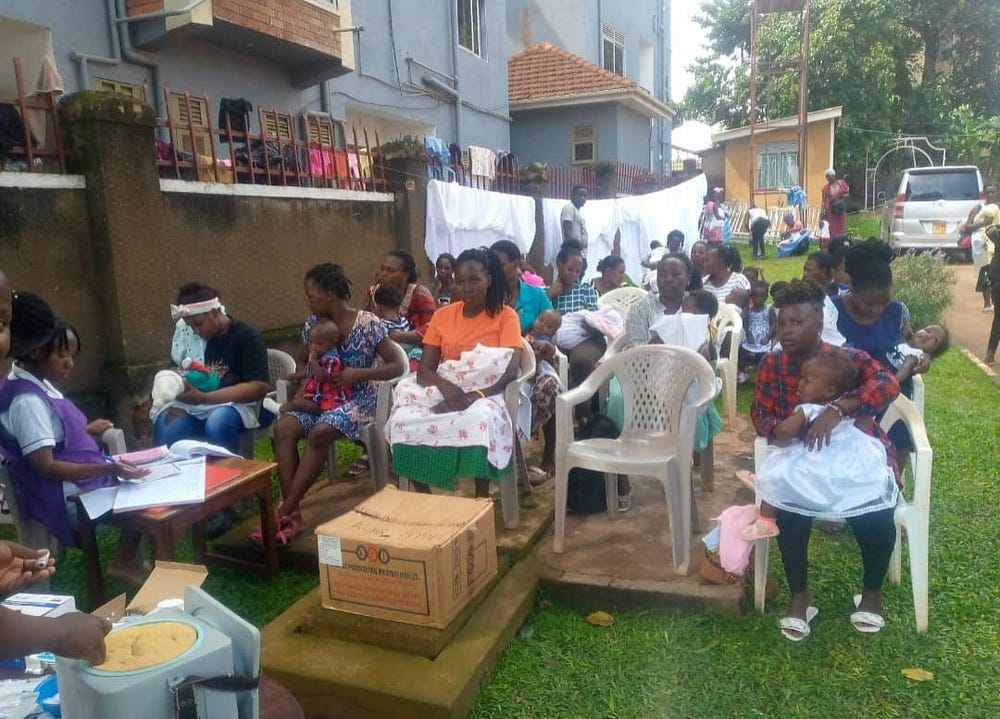
The health centre now has vaccines and improved storage facilities, thanks to the United Nations Children’s Fund (UNICEF), ensuring that beneficiaries do not miss out on much-needed vaccination. Furthermore, members of the Village Health Team (VHTs) were also provided with transportation for easy access to hard-to-reach areas and vaccine carriers and cold boxes with ice packs that protect the vaccines. This was not always the case, as children died of vaccine-preventable diseases for years because immunisation services were inaccessible.
The Uganda National Expanded Program on Immunisation
The Ugandan government established the Uganda National Expanded Program on Immunisation (UNEPI) to contribute to the overall goal of the Health Sector Strategic Plan of reducing morbidity, mortality and disability caused by vaccine-preventable diseases to the point where they are no longer of public health importance. The programme targets infants and women of childbearing age to participate in all government immunisation programmes.
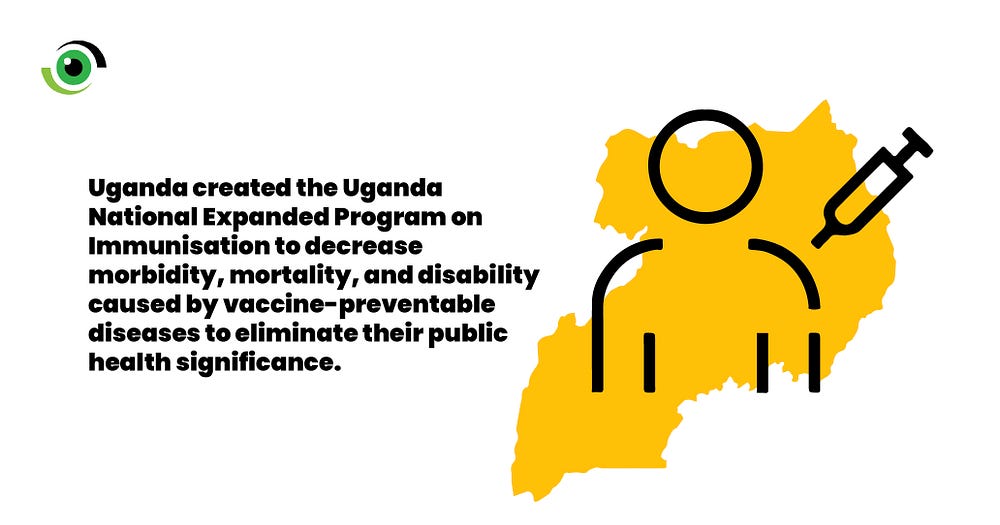
According to Dr Alfred Driwale, Assistant Commissioner for Vaccines and Immunisation at the Ministry of Health, the government adopts two main strategies to ensure that Uganda’s population is immunised: routine immunisation services delivered through static health facilities and outreach services delivered through strategic community-based monthly post or at schools as well as home outreaches for the most remote hard to reach areas.
However, despite all the government’s efforts to make vaccines available, the vaccines often go to waste due to improper storage in hard-to-reach areas. According to a 2018 Sustainable Energy for All (SEforALL) report, an estimated 1.5 million people die annually from vaccine-preventable diseases. The World Health Organization (WHO) estimates that over 50% of freeze-dried and 25% of liquid vaccines are wasted due to cold chain disruptions.
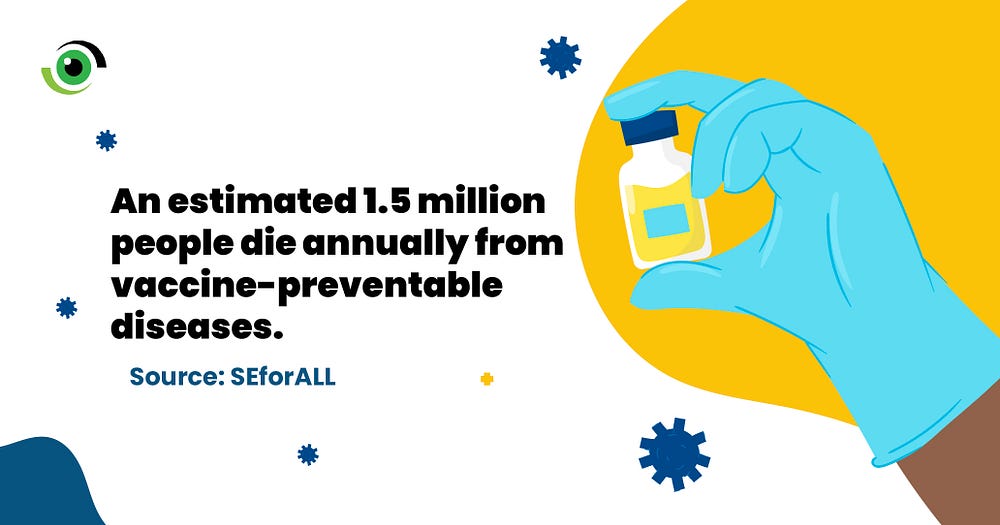
Reaching the last mile
The storage and transportation of vaccines at optimal temperatures was a challenge in Bujubili sub-county until 2019 when UNICEF Uganda procured cold chain supply equipment for Bujubili Health Centre III. These were distributed throughout the five parishes and 13 villages that make up the sub-county. According to Yakobo Kawesi, Emergency Health Coordinator, Africa Humanitarian Action, this has had an impact on the most remote and hard-to-reach areas as well as the most densely populated refugee settlement camps. However, he mentioned that the members of the Village Health Teams were the real heroes.
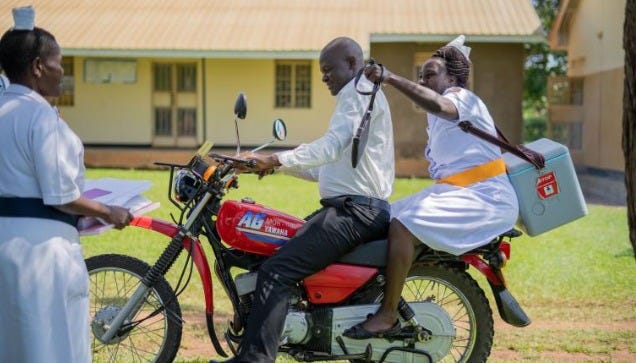
Like many other countries, Uganda is facing a critical shortage of health workers; therefore, the government established the Village Health Team programme as a cost-effective way to connect communities with essential health services. The primary responsibility of VHTs is to bring communities together and promote improved healthcare services, closing the gap between communities and healthcare facilities. Each village must have four VHT members, at least two of whom provide integrated community case management (iCCM) for childhood illnesses.
According to Kawesi, their efforts have helped save the lives of countless children who would otherwise not have received a single dosage of these lifesaving vaccines. “Our Village teams serve over 200 children every day in the ten villages covered by our outreach programmes from Bujubuli health centre alone,” he added.
VHTs, the real MVPs
A VHT member must be at least 18 years old and able to read and write, preferably in the local dialect. Once accepted into the programme, VHTs receive initial training to equip them with the ability to provide essential health promotion, referral, and service delivery at the community level and ensure that they have the skills to provide safe and effective care. The Ministry of Health and implementing partners provide refresher training when necessary.
VHTs in the Kyegegwa district are now the backbone of immunisation drives. Navigating the region’s rough terrain, they carry the vaccines in vaccine carriers and cold boxes to ensure the temperatures are correct and the vaccines are delivered on time. They also advocate to community members at village community gatherings and door-to-door to ensure that everyone is up to date on their vaccines. The VHT members are volunteers and do not receive any payment for their services.
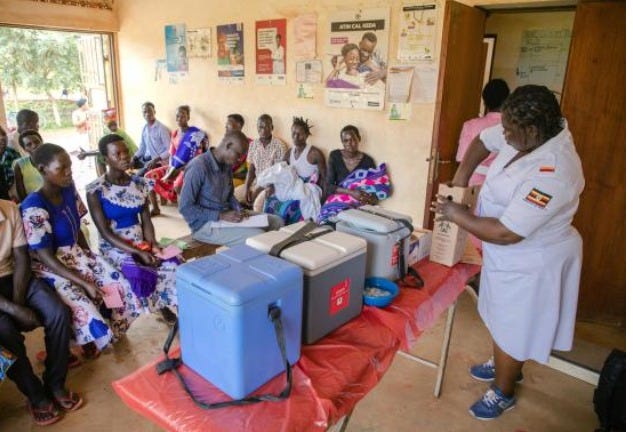
Diana Kansiime is a Village Health Team leader at Bujubuli health centre III who has served for over seven years. “When I started off in 2016, I would only serve a handful of, say, 10–20 mothers daily, but today I am able to reach over 100 mothers at my outreach centers,” she said, adding, “for my village, Nyantebo, there are seven committed VHTs, with two men on the team. We volunteered and do this every single day without fail. For us, no place is too far to reach; we can endure the dusty and bumpy road network with vaccine carriers loaded with vaccines using our motorcycles every day.”
Kansiime said that a significant challenge for her was dealing with community members who are still superstitious and refuse the vaccines because they believe they are harmful. “We suffer with poor information management because of the new arrivals who confuse our Health Management Information Systems,” she added. There is also the fact that they do not receive any formal payment, which can often be quite challenging.
According to Francis Habyaremye, an EPI focal person, with the improved vaccine management, approximately 26,441 child refugees and people living in host communities within the Bujubuli sub-county had received vital vaccines such as BCG, DPT3, polio and measles. These vaccinations protect them from fatal illnesses and are a major improvement from the 12,364 who were reached before the acquisition of generators, refrigerators, cold boxes, and motorcycles for health workers and VHTs.
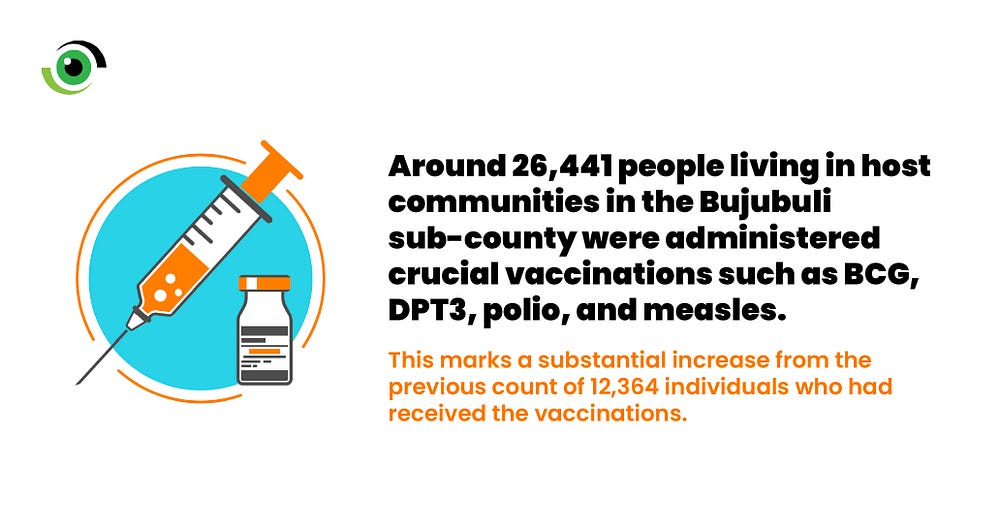
Kemigisha Cleophas, a mother of six who lost her first child to measles following her failure to access immunisation services, now ensures that all her children complete all the doses, including the HPV vaccine for her elder daughters.
Kingsley Nsheemye, a refugee from DRC whose three children have received all the routine doses at Bujubili Health Center III, expressed his gratitude to Kansiime. “My wife is visually impaired and finds it hard to access the centre since we stay very far, but Madam Kansiime has been very helpful since we arrived here in 2017. She always follows up on us during her door-to-door vaccination routines. She takes all our records and reminds us even when we have forgotten about the next visit. We owe our good health to her,” he said.
Although VHTs cannot replace a functional health system, they have become an integral part of it. As a result, the government should offer adequate compensation for their services. This will motivate the VHTs and ensure that the equity advocated for in healthcare delivery is extended to those providing the care. There is growing agreement that community health workers, such as VHT workers, who provide effective preventative, promotive, and curative health services should be compensated. This would necessitate a legal framework as well as a greater understanding of the various payment structures and their implications.


